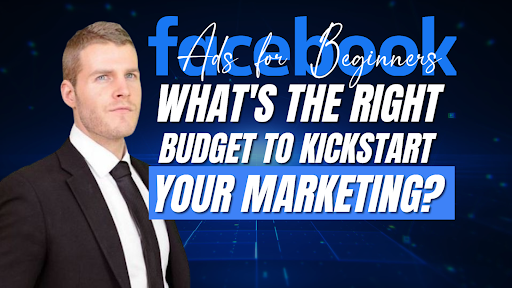
Facebook Ads for Beginners: What’s the Right Budget to Kickstart Your Marketing?
In today’s competitive market, depending purely on SEO activities for promoting a brand is an unwise choice. Instead, you must have the support of social media to kickstart your marketing activities and maximize your brand’s reach.
Facebook is the largest social media platform, with nearly 3 billion monthly users. Facebook Ad is the most powerful option that allows you to engage with the right people for your business. It doesn’t matter whether you have a small business or a huge brand; Facebook Ads offer fair opportunities to reach your target audience easily.
All you need is a clear idea about the basics of Facebook Ads and an understanding of how you want to run your ad campaign. Then, using Facebook Ad tools, you can create ads with eye-catching pictures or videos and grab your audience’s attention. Only the kicker is to figure out how much you should invest in Facebook Ads if you are a beginner.
Before we answer the right budget question for Facebook Ads, check out some of the ‘Whys’ and ‘Hows’ about it to make an informative budget decision for your business.
Why Choose Facebook Ads for your Marketing?
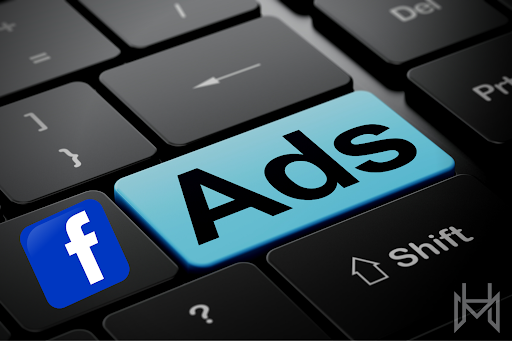
Businesses across the globe use Facebook Ads to boost their profits and enjoy better returns on investment for marketing. They are economical, have the potential to make your Ad campaign go viral, offer a variety of Ad formats, and have opportunities to measure your return on investment.
Look at some of the specific reasons marketers choose Facebook Ads for marketing over other social media platforms.
- Granular Targeting
It is a form of targeting based on people’s behavior, interest, demographics, connections, age, languages, and locations. It is a highly-specific form of targeting that no other Ad platform offers. As a result, you can filter your target audience faster and reach them with specific Ads resulting in a higher conversion rate. The add-on benefit is you don’t have to go through the hard work of audience research. Just check out your competitors’ followers and show your Ad to them. - Powerful Analytics
Facebook offers valuable metrics like page likes, post engagements, clicks, CPC, and reach during a chosen timeframe. These data help understand your Ad performance better. Further, you can use Facebook Insights to optimize your Ad campaign. It enables you to understand your target audience’s reactions to your Ads and what you need to do to optimize them further to boost your conversions. - Facebook’s AI-based Machine Learning algorithm
Besides targeting and analytics, the Facebook Ad platform also helps you gain new leads. After your Ad runs for your target audience, resulting in conversions, Facebook’s AI identifies them and refers your Facebook Ad to people with similar interests.
Facebook Ad platform allows your business to connect and share varied information with your customers. You can use it to promote anything like a product, a service, an app, or an event through its various Ad formats.
Various Ad Formats on Facebook
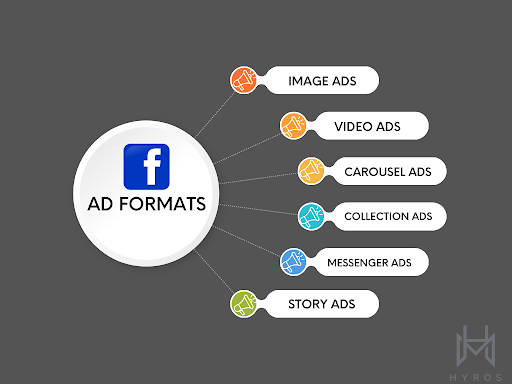
- Image Ads
If you’re a beginner to Facebook Ads, image Ads are an excellent way to kickstart your marketing on a social media platform. Make it attractive and informative enough to draw the attention of Facebook users on their social feeds. Be selective about the color, text, graphics, resolution, and layout of the image, which will make the users act on your CTA better. - Video Ads
Such Ads are a great way to attract viewers’ attention for showcasing your product, demo videos, behind-the-screen videos, or other engaging videos related to your business. Be creative and use MOV, MP4, or GIF file type with at least 1080 x 1080 pix resolution to ensure better viewing of your ads. - Carousel Ads
If you want to showcase your product/service through multiple images or videos, carousel Ads are your best option. You can add up to ten videos/pictures together in your Ads. For each of them, you can have individual CTA allowing specific actions for people to take.
While uploading, ensure the image file size is up to 30 MB and the video file size is up to 4GB. Also, keep the video duration between 1 Sec to 240 min. Facebook recommends using video file types – MOV, MP4, or GIF and image file types – PNG or JPG with a resolution of at least 1080 x 1080 pix and an aspect ratio of 1:1. - Collection Ads
These Ads are specifically for mobile devices. Users can view your collection of images or videos and click directly to buy your product/service. Collection Ads allow users to directly purchase products/services on the social media platform without leaving it. It would be best if you gave special attention to your primary video/image as it will attract viewers to click on them to check out other listed pictures or videos. Also, ensure every product you list should have an individual price tag to make it easier for potential buyers to click and buy it. - Messenger Ads
Users can view all the above four Facebook Ad formats directly on their social feed. But messenger Ads are for target audiences on Messengers. Currently approx. 1.3 billion users use it for regular interaction. So place your Ads by choosing Messenger on Facebook Ads or by giving a ‘Click to Messenger’ CTA to initiate a conversation with your target audience using Messenger. - Stories Ads
This Ad option is for viewing in the stories feature of Facebook. It is a mobile-friendly video Ad that viewers can see with a full-screen video under the Facebook story category and click on the CTA (placed at the bottom of the video) for the desired action. Such Ads are suitable for all your campaigns except store visits and engagements.
Facebook Ads Budgeting
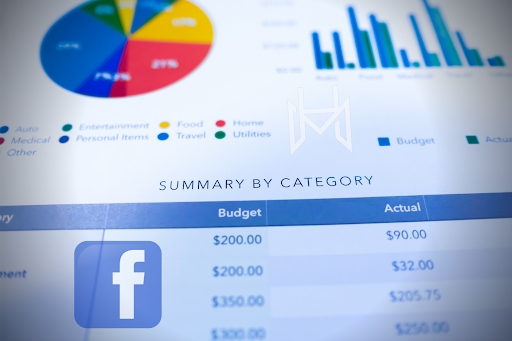
Facebook Ads are highly versatile, and for beginners, Facebook Ad budgeting might feel like a shot in the dark. But that’s not true!
Here, you can find a strategic approach to explore the depths of Facebook Ad budgeting. Also, understand how to spend your Facebook Ad money based on your revenue goal and distribute your budget across Ad campaigns to meet them.
While determining your Facebook Ad budget, you face two critical decision points.
- How to allocate your Ad dollars among various ad sets (campaign budget Vs. ad set budgets)
- How each of these Ad sets spends its allotted money (Lifetime budget Vs. Facebook Ad daily budget)
Types of Facebook Ads Budget
- Campaign and ad set budgets
If you are flexible with your Facebook Ad budget money spending on various ad sets and prefer a simple campaign setup or management, the Campaign Ad budget type is best for you. It automatically chooses which ad set to get funds depending upon the one with the best opportunities. This budget type is suitable if you have two or more Ad sets to manage and your goal is to see better overall performance.
Alternatively, the individual Ad set budget option gives more control over your Facebook Ad budget money. It is best suitable when you have mixed optimization goals or must cover a wide range of audience sizes between your ad sets. Choose this ad budget type if your bid strategies differ between ad sets or if you’re testing different ad tactics to compare the performances. - Lifetime and daily budgets
Lifetime budgets are like hard caps and will not exceed the limits of your Ad money spending. In it, you give Facebook your full Ad budget money for the campaign you want to spend with the dates the Ad set should end. Facebook is more performance-conscious with lifetime budgets and will adjust your daily spending Ad money to take advantage of the day. However, you face a lot of daily spending fluctuations and find it hard to know what kind of coverage you’ll be getting on any given day.
Daily budgets are easy to set up, allowing for a much easier pacing of per-day spending. It’s a great option if you want to spend the same amount each day. It makes the Facebook Ad budgeting process much easier to control your money and plan financially. However, the biggest drawback, Facebook will try to spend your full daily budget money every single day no matter what performance you get out of it.
Facebook Ads Budget Calculator
Facebook Ad budget calculator is a handy tool that helps you figure out exactly how much you need to spend for desired results. First, however, you must know a few things to use it.
Run at least one Facebook Ad campaign and know about CPM (cost per thousand impressions), CTR (click-through rate), and conversion rates.
- You can find them all under Facebook Ads Manager.
- Go to the default ‘Column Performance.’
- Select ‘Performance and Clicks’ under the drop menu to check your CPM and CTR.
For Conversion rates –
To check conversion rates, first, decide how you want to classify your conversions, like installing an app, checking out your website, etc. Once you define it,
- Go to Facebook Ads Manager and customize the main reporting dashboard.
- Click on ‘Column Performances’ and drop down to ‘Customize Column’ at the bottom.
- Click on ‘Conversions’ and select ‘Standard Events’ on the left to get the metrics for conversion rates.
- Use the metrics to set your conversation rate parameters and click ‘Apply’ at the bottom right.
Know to Calculate your CPM, CTR, and Conversion Rates
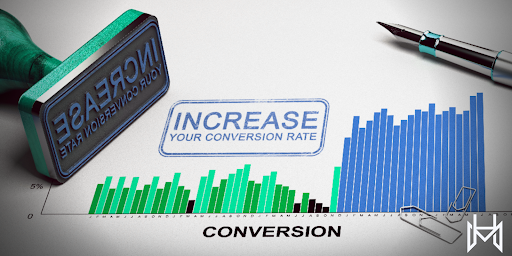
As a marketer, knowing how to calculate your CPM, CTR, and conversion rates is a value-added skill that keeps you one step ahead of others.
- CPM calculates the number of impressions you get against the amount of campaign money you spend.
CPM = (Total Ad Spend /Total Ad Impressions) x 1000
E.g., If you spent Ad money of $200 and got 5000 impressions, you would have $40 CPM. - CTR shows the rate of clicks you received against your impressions.
CTR = (Total Ad Clicks/Total Ad Impressions) x 100
E.g., If you got 250 Ad clicks and 5000 impressions, it shows you have a 5% CTR. - Conversion Rate: It shows how many conversions you have against your set parameters from the clicks on your Facebook Ad.
Conversion rate = (Total Conversions From Facebook Ad/Total link clicks from Facebook Ad) x 100
E.g., If you got 100 conversions and 2000 link clicks from Facebook Ads, you have a 5% conversion rate.
Factors Determining How Much To Spend on Facebook Ads
There is no specific number of how much you should spend on Facebook Ads. But working through each factor can give you a basic outline for it.
- Size of your Brand
Everyone knows about big brands like Nike, Apple, Ralph Lauren, etc. They don’t need to spend on brand awareness and can directly create sales Ad campaigns for people to buy their products. Established brands can jump straight to conversion campaign Ads. However, there’s no harm in sharing great content about your brand before pushing for sales.
Smaller/ new brands require spending more for brand awareness. Instead of putting money into conversion Facebook Ads, allocate a budget to spend on a brand awareness campaign first. Create valuable content for your target audience, like blogs, videos, etc. Use story Ads, carousel Ads, and Video Ads to tell your brand story and nurture them through their buyer journey. It will slowly win their trust in your brand and boost your conversion rate later. - Average Cost of your Products
If you are a new brand and your product is expensive, you must allocate more Facebook Ads budget to build customer trust before investing in conversion campaign Ads. People will not think twice about clicking on sale Ads of known brands like Apple or Dell even if they are expensive, but they wouldn’t do the same for unknown ones.
Whereas, if the average cost of your product is less (like socks, shoelaces, paintbrushes, etc.), you can invest directly in conversion campaign Ads even if you are a new brand. Necessity and low price drive people towards conversion, and you don’t have to worry about brand awareness. - Your Marketing Budget
If you are a new brand, most of your marketing budget will go towards creating content and promoting it with social campaigns and inbound marketing techniques to build brand credibility. Little-established brands combine awareness campaign Ads and conversion Ads to get better results. But keep a close eye on the return on your Ad spend (ROAS) to avoid leaking money. - Your Goals
Every company wants growth, but the pace and how they achieve it differs. For example, if you have infrastructure and support, grow your business aggressively by investing in a higher % of your revenue on the Facebook Ad budget. On the other hand, if you are recovering from a challenging business situation, take a conservative approach to growth and invest in a lower % of your revenue for steady growth over a long period.
What’s The Right Budget For Facebook Ads to Kickstart Your Marketing?
The best recommendation for any business for the right Facebook Ad budget is 5%–12% of revenue. For Beginners, if you want to grow aggressively, allocate closer to 12% of your income towards it to maximize your reach and boost your business. But, if your business is old and you have steady revenue coming in, keep your budget closer to 5% to maintain and grow an incremental business.
However, the key to determining your Facebook Ads budget is through understanding the numbers for marketing and sales for your business. So do a bit of industry research and reach out to people in your field to know what they are doing to promote their business on a social media platform.
Consider the factors that impact your spending on Facebook Ads, and evaluate your budget using these critical numbers. It will help determine the right Facebook Ad budget for your business.
- Cost per lead – A lead does mean a sale; it is what you need to pursue to make a sale. Take your total amount of Ad spend and divide it by the number of new leads generated, and you will know your cost per lead (CPL).
- Cost per core event – If you need conversions before your actual sale, put an amount of what you can profitably afford to spend for the event. E.g., if you are selling a low-value product, you must figure out the maximum amount you can spend on a Facebook Ad to remain profitable. Then, take the call to spend more or less based on your conversion rate for the product you posted on a Facebook Ad.
- Cost per customer acquisition – Find out how much money you have spent to acquire new customers. Knowing the definite cost per customer acquisition for your business can help you allocate the appropriate budget for your marketing. There is no magic number for the cost per customer acquisition, but factors like your product, brand, etc., impact its outcome. Till it is affordable and profitable for you, go for it.
- Conversion rate – Whether it is a purchase of a product/service, downloading an app, a phone call, an appointment, or enrolling for a subscription – That makes the sale! It is one of the critical numbers which directly correlates your Ad spending to lead generation and conversions later.
Conclusion
There is no ‘one-size-fit-for-all’ number to constitute the ‘Right Budget’ for Facebook Ads for your marketing. Choose anywhere between 5%-12% of your revenue to set your Facebook Ad budget spending. Several factors will continue to influence it, like your goals, industry, target audience, changing buyer habits, etc.
Have clear Facebook Ad goals, understand your critical numbers, use Facebook Analytics, and start with what you can afford. Lastly, instead of spending your Facebook Ad budget money on lead or content-generation Ads, distribute them between education, engagement, and audience-building.
Allocate approximately 20% of your Facebook Ad budget spending to create an audience you want to leverage long-term. Use 60% of it to promote your offers and generate conversions. Use the rest 20% towards retargeting efforts. As a beginner to Facebook Ads, we advise you to start experimenting by changing elements of your Ad to gauge its impact. Give it time, then evaluate and adjust it accordingly.
